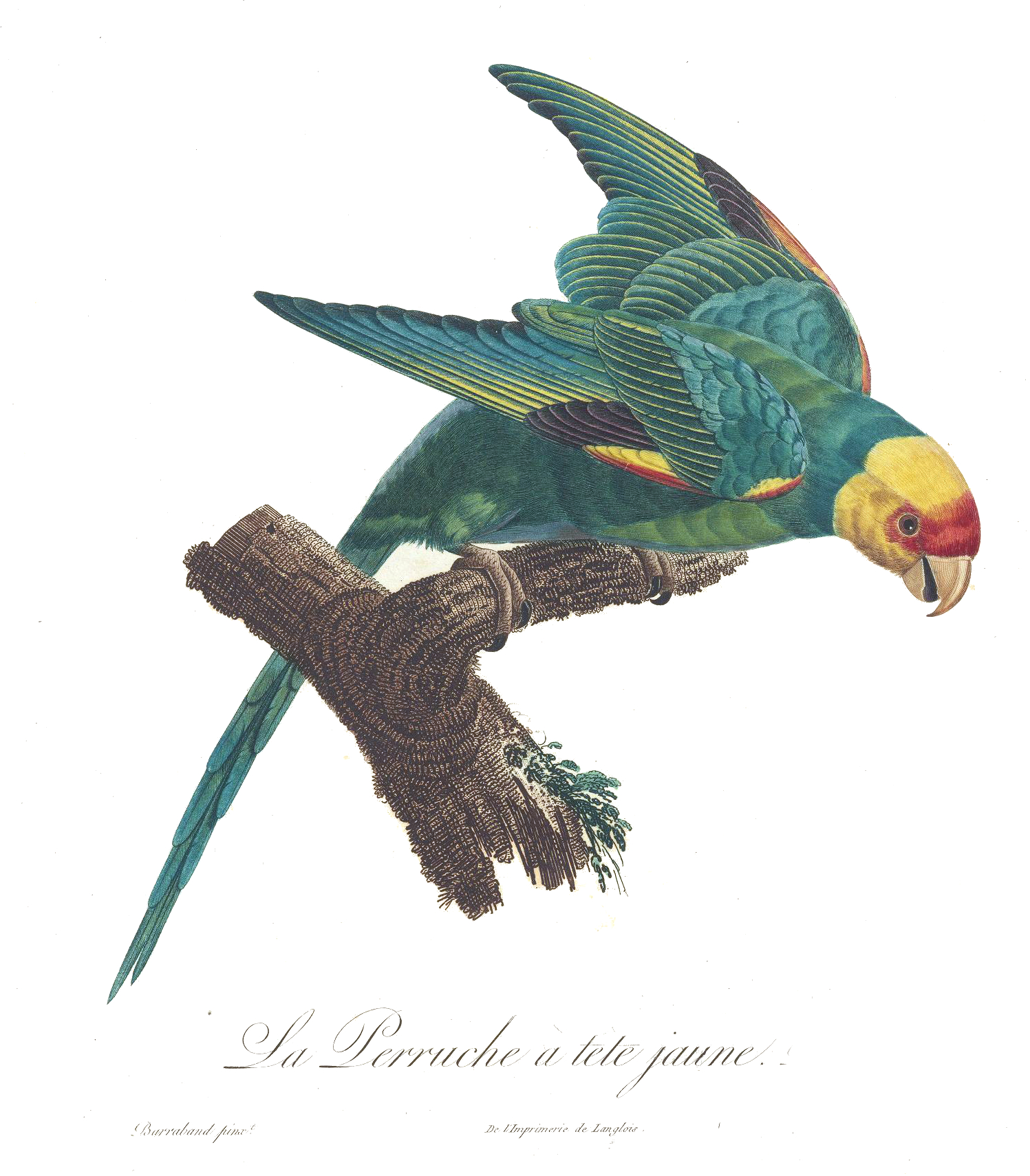Native parrots in Nebraska?!
The Carolina Parakeet was a type of brightly-colored conure that was native to a pretty wide swathe of territory in colonial North America, although how wide is debated. It seems to have certainly reached at least the Mississippi River at the westernmost part of it's range, and certainly the Ohio River to the north of it, although sightings of straglers (individual birds likely blown off course by a storm or some other happenstance) were noted as far north as Buffalo in upstate New York or even into Canada, in southern parts of Montreal. With such a wide range, it was likely to have some presence on the western side of the Mississippi, but reaching all the way into Nebraska is unlikely, although they were noted to be quite tolerant of winter weather.
This relative of the sun conure lived in huge flocks, which were often stated to be loud, and their vocalizations not altogether pleasant. They were numerous enough to be considered a pest by farmers, whose crops they threatened, and whose clearing of the land for farmland seems to have reduced the animal's habitat; the author of the Family Magazine article notes that these parrots seemed to prefer nesting in dead trees, and that clearing the forests for farmland might be a contributor to their declining populations. Given the range and numbers of the animals, their decline and disappearance is something of a mystery.
How did it go extinct?
Just as surprising as its ever having existed is the rapid decline of what was considered a plentiful and wide-ranging animal. The unnamed author of an article in The Family Magazine written in the winter of 1838-1839 notes that by 1831, John James Audobon had noted a visible decline in the bird's numbers as compared to 25 years prior (so about 1806). Anecdotally, I would note that this sounds a lot like what we in North America in the 2020s are experiencing with regards to the monarch butterfly and fireflies, which is mostly attributed in the common understanding to habitat destruction (monarchs need one specific type of weed to lay their eggs on, and fireflies need dead and decaying leaves left to rot instead of raked or blown away for the same purpose). Modern scientists are left to speculate heavily on what caused such a dramatic loss of numbers so quickly, hindered further by the lack of scientific understanding of the species while it was extant.
Key theories include:
- Destruction of habitat
- Deliberate extermination as a pest
- Disease
- Predation or competition from non-native species
- Wouldn't it be a kicker if we were all scrambling to save the bees in the 2020s when their introduction might have been what caused the extinction of the parakeets 200-some-odd years ago? That's right, the honeybee is an import from Europe, brought purposely by colonists to pollinate their crops and stock apiaries, which provided beeswax and honey, important commodities in pre-Industrial Western societies.(More about honeybees.)
It wouldn't have been eaten by cats, though. Early Americans noted that the Carolina parakeet was toxic to cats, possibly due to the parakeet's diet relying heavily on cockleburrs, which might have made their flesh poisonous when ingested.
